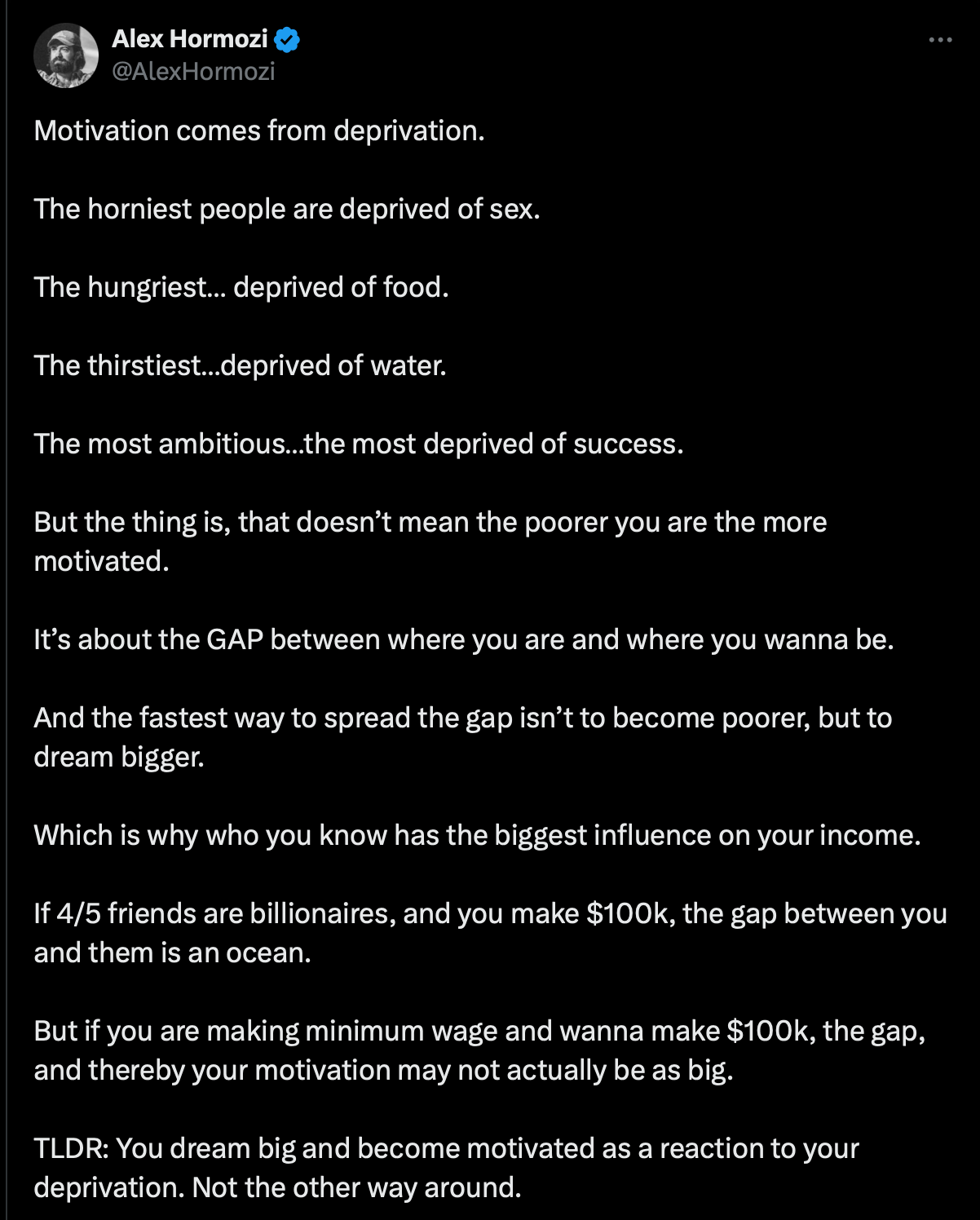The Motivation Factor
Why We Do What We Do (Or Don't)
What Motivates You?
I’ve been thinking a lot about motivation lately. What drives us to start a business, finish a project, write a weekly Substack, or finally fold the mountain of laundry that’s been judging us from the corner?
This week, I got a call from my mentor, Steve Whiteside. Steve was the first person to hire me when I left the Army. He’s a fellow West Point graduate who set out to build a software company. Instead of hiring seasoned tech professionals, he believed junior military officers could learn fast and bring innovative ideas, and he was right.
During our call, Steve asked me about my motivation for starting this Substack. He said he’d been enjoying it and wanted to know why I was dedicating my time to it. Before I tell you what I told him, let’s break down what motivation really is.
The Elements of Motivation
Motivation combines direction, intensity, and persistence.
1. Direction: Direction is your goal or mission, the clear outcome you’re working toward. It’s hard to stay motivated without clarity. Without a map, even the most passionate person gets lost.
2. Intensity: Intensity is the energy and urgency you bring to an action. It’s often tied to a perceived deprivation of something. Think about it: you’re motivated to eat because you’re deprived of food. You might hustle hard at work because you feel deprived of financial security, status, or the ability to buy that ridiculously expensive expresso machine that keeps popping up on your Instagram feed (Don’t judge me on my caffeine-related life goals). The key here is perception. For Example, If you have a net worth of $1 million, that might feel like a lot, unless billionaires constantly surround you. In that case, you might feel “deprived” of wealth, which could fuel your intensity to earn more.
As Alex Hormozi explains, perceived deprivation can be a powerful driver for action.
3. Persistence: Persistence is about how long you’re willing to stick with something. It’s the determination to keep going despite setbacks. Angela Duckworth calls this grit, and her research shows that grit often outweighs talent as a predictor of success. Persistence turns fleeting motivation into lasting results.
Two Types of Motivation
Now that we’ve defined motivation let’s explore its two main types:
1. Intrinsic Motivation: Intrinsic motivation comes from within. It’s the drive to act because the activity itself is fulfilling. Examples include:
• Learning a skill out of curiosity.
• Pursuing a passion like painting or music.
• Writing for self-expression or personal growth.
2. Extrinsic Motivation: Extrinsic motivation comes from external rewards or pressures. Examples include:
• Working for a paycheck.
• Striving for a bonus or promotion.
• Competing for recognition or awards.
Intrinsic motivation is like that friend who shows up to help you move just because they care. Extrinsic motivation is like that friend who shows up because you promised pizza.
Both have their place, intrinsic motivation fuels sustained effort, while extrinsic motivation can jumpstart action when the task isn’t enjoyable.
Why I’m Writing the Prof Z Project
When Steve asked about my motivation for this Substack, here’s what I told him:
I’ve always loved teaching. Sharing knowledge to help others accomplish their goals, and hopefully change the world, has been one of the most rewarding parts of my life.
However, teaching at the university level has its limits. Although I reach about 150 students a year, which is great, my ability to make an impact is still confined.
This Substack lets me expand that reach. It combines my passion for teaching with my desire to grow as a writer, all while sharing lessons that can help others focus, act, and be better.
My intensity comes from a perceived deprivation: the feeling that my reach is limited. I want to share my ideas, experiences, and knowledge with as many people as possible.
And here’s the kicker: I'd still write it even if no one else reads this.
Marcus Aurelius wrote Meditations as a guide for himself, a tool for self-improvement and a reminder of the principles he wanted to live by. Writing clarified his thoughts, reinforced his values, and strengthened his commitment to Stoic virtues like rationality, resilience, and humility.
That’s why I’m here, writing this. For me. And maybe for you, too.
What’s Motivating You?
After I shared this with Steve, he said, “I can’t think of a better use of your skills than helping others, especially young men, be their best selves.”
He’s right. We all have different levels of motivation depending on the activity. But when you’re struggling to stay motivated, ask yourself:
· Is my direction clear?
· Do I feel a perceived deprivation of something?
· Am I willing to persist even when it’s hard?
Intrinsic motivation sustains you over the long haul, but it’s a slow burn. Extrinsic motivation creates quick results but often fades fast. Balancing the two can help you achieve meaningful progress.
So, what’s motivating you today?
Don’t get captured.
Connect with Zach
Provide Feedback
Also, Check out the Prof Z Project Library, where I have added many resources (books, tools, articles, and podcast recommendations) for different topics such as entrepreneurship, leadership, operations, finance, personal development, real estate, and even health and fitness. It's a free resource, so enjoy a single location for valuable things I have found. Send me a message with any suggestions for adding to the library.




